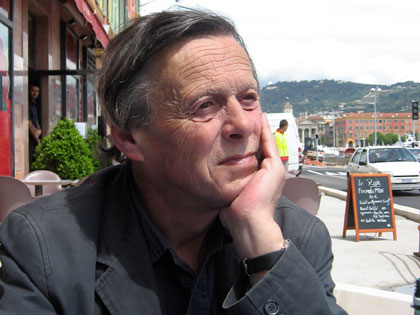Niall Williams’s novels have a considerable readership, both here and abroad, and it’s not hard to see why. Since the publication of Four Letters of Love 1n 1997 he’s been offering a view of life that puts great stock in chance, coincidence, yearning and questing as ways of leading to personal fulfilment and spiritual redemption.
Of course, if you don’t buy into this determinedly comforting vision, the books can seem like high-flown tosh. “An Irish Paulo Coelho” is blazoned approvingly on the back jacket of his last novel, Boy in the World, and though Williams is a far better writer than that purveyor of pseudo-mystical codology, he’s firmly in Coelho’s woozily feelgood camp.
Boy and Man isn’t so much a follow-up to Boy in the World, which was published a few months back, as a continuation of it. That earlier book began as the boy of the title, known only as Jay, left the house in Co Clare that he shared with his saintly grandfather, known only as The Master, and went in search of the father he’d never known. Why he suddenly embarked on this journey at the age of twelve wasn’t clear to at least one reader, but at least it took him to interesting locales – to London and Paris, in both of which cities he miraculously survived terrorist bombings, to Stuttgart and Portugal and finally to Ethiopia, where he ended up selflessly helping the disease-ridden and the starving.
On most of these travels he was accompanied by Sister Bridget, a young nun he encountered by chance in Ireland at the outset of his journey and who saw in the boy a way of fulfilling her own spiritual quest, whatever that might be. Meanwhile back home, The Master, though pronounced dead after a car crash, miraculously survived and was being looked after by a lorry driver who had given the boy a lift to Dublin. Everyone wondered where Jay could possibly be, while in far-flung lands Jay himself mourned the supposed passing of The Master, which he had read about by chance in a newspaper Sister Bridget had found.
As the novel ended, various questions remained unanswered. Would Jay ever learn that The Master was alive? Was his father – an alleged terrorist killed in a Frankfurt bombing – actually dead? If not, would he ever meet up with the son he had never known about? Would the lorry driver, Ben Dack, with his ghastly homespun wisdom, drive off a cliff and save the reader the agony of having to listen to his twaddle? And would Sister Bridget and Jay find another kind of fulfilment by ending up in bed together? Well, no, you don’t find that kind of carry-on in a Niall Williams novel.
As Boy and Man opens, Jay is three years older and still tirelessly tending to the needy in Ethiopia, along with Sister Bridget. Maybe now is the time for Sister Bridget and Jay to get it on together, but no, the author is too busy sending them off on yet more spiritual journeys to be bothered with such crude, if potentially jolly, diversions. This is serious questing, after all, and it involves Jay falling in love with a doomed African rape victim, Jay’s father enduring torture in some state facility somewhere, The Master wistfully flying a symbolic kite in Co Clare as he thinks lovingly of his grandson, and the insufferable Ben Dack (whom the author seems to adore) spouting yet more upflifting drivel to anyone who’ll listen.
I’m hardly being a spoilsport in informing you that by the end absolutely everything is resolved to everyone’s satisfaction. That, after all, is what devotees of Niall Williams expect from his books and he’s expert at delivering it. Indeed, so shamelessly canny is his emotional manipulation that the final few pages will probably have his fans weeping at the healing power of it all – redemption on demand, with coincidence, faith and miracles the instruments that provide it.
“Chance is how God shows Himself to us,” the reader is told towards the end of the earlier novel, and only a killjoy would point out that in real life chance and happenstance are more often our undoing than our salvation. But why should real life intrude in this fictional world of cosy connectedness?
